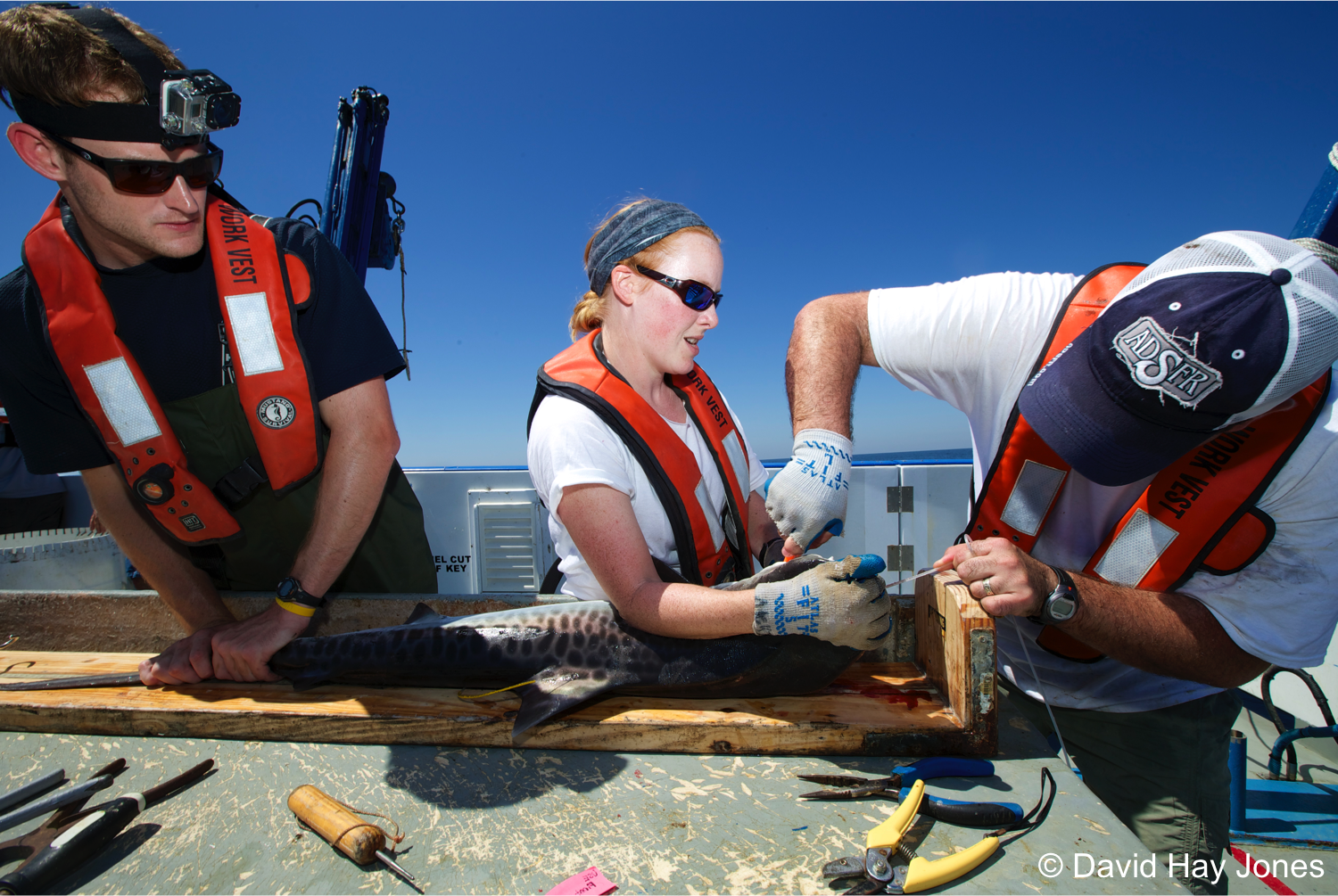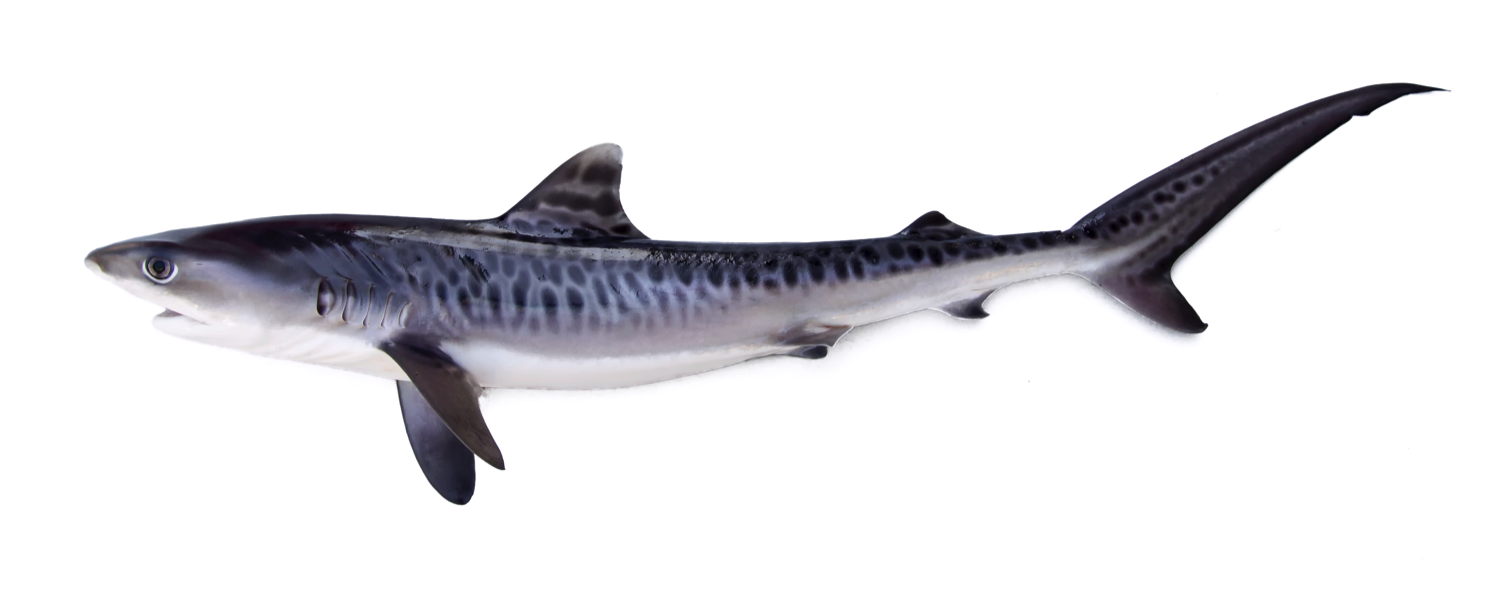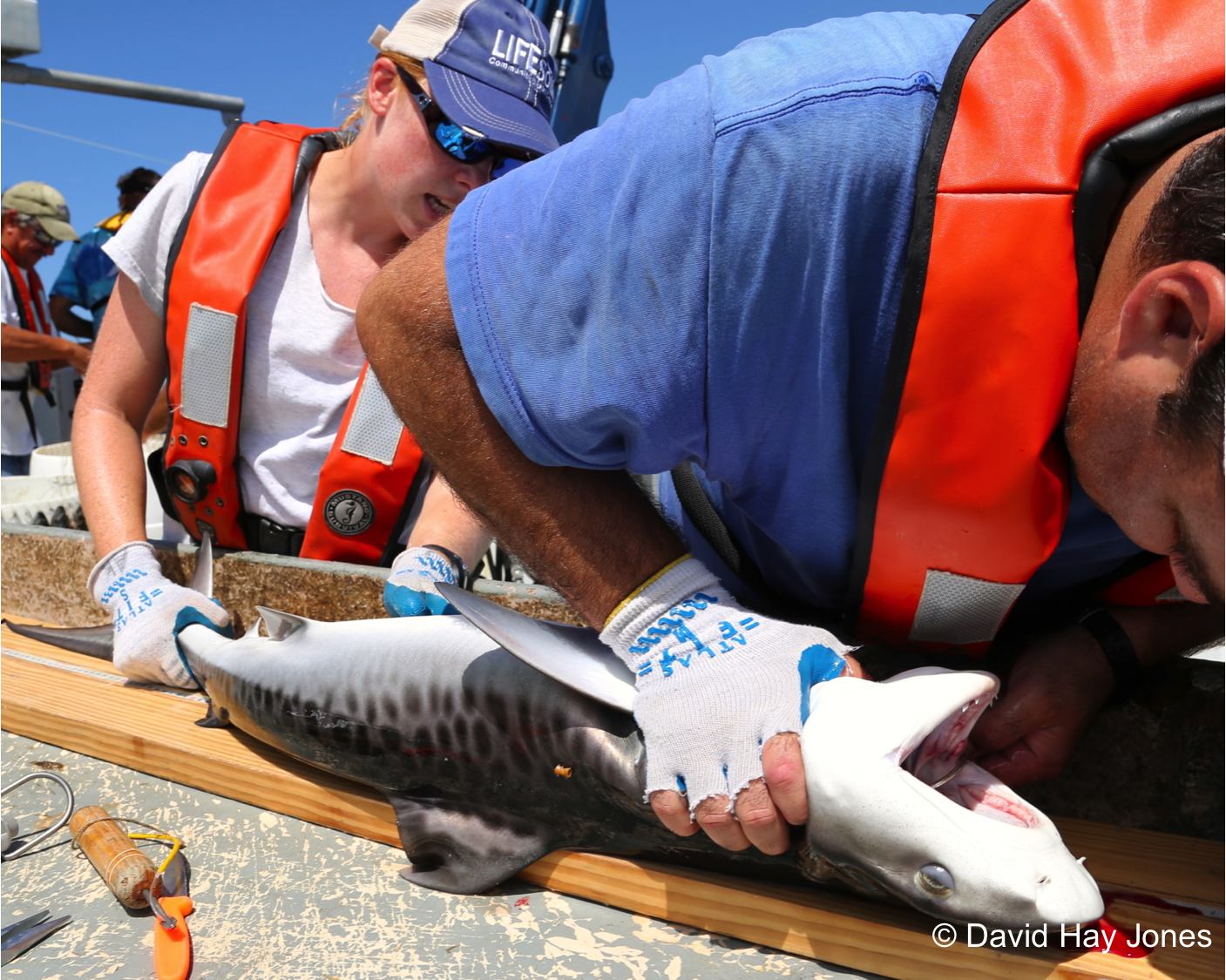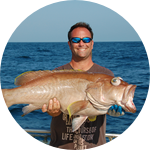About This Project
Growing concern for declining shark populations is driving the need for effective conservation and management plans. An important, yet often missing, component of these plans is accurate dietary data. Tiger sharks are iconic predators, notorious for the wide variety of prey they consume. Using satellite tags, our goal is to investigate the link between oil platforms and the prevalence of an intriguing prey item common to tiger sharks in the northern Gulf of Mexico: terrestrial birds.
Ask the Scientists
Join The DiscussionWhat is the context of this research?
Tiger sharks are infamous for the variety of prey items they consume, including marine mammals, fish, squid, sea turtles, and occasionally, birds. In 2010, we began investigating the diet of tiger sharks in the northern Gulf of Mexico. Our findings show that tiger sharks in our region consume fish, squid, and birds, all items previously described in their diet; however, we were shocked by two findings: the prevalence and identity of the birds consumed. Surprisingly, birds were common in tiger shark diets. Even more surprising, DNA barcoding of the bird remains identified them as terrestrial species like kingbirds, flycatchers, thrashers, coots, wrens, woodpeckers, doves and yellowthroats! Currently, this link between tiger sharks and the backyard birds they consume is a mystery.
What is the significance of this project?
Recent estimates suggest that the global biomass of predatory fish has declined by two thirds over the past 100 years. Understanding the diet of apex predators such as tiger sharks is critical for their management, and for predicting how changes in their populations will impact the resilience of the ecosystems they occupy.
What are the goals of the project?
The goal of this project is to investigate the link between oil platforms and the unusually high prevalence of terrestrial birds in the diet of juvenile tiger sharks in the northern Gulf of Mexico.
In the fall of 2015, our objective is to tag four juvenile tiger sharks with satellite tags that transmit locations when the animal comes to the surface.
These data will allow us to test the idea that tiger sharks are surfacing more frequently in the vicinity of oil platforms to take advantage of terrestrials birds attracted to the platform lights and too weak to return to land.
Budget
The first step in understanding how tiger sharks are encountering terrestrial birds is tracking where, and how often, tiger sharks are coming to the surface. Satellite tags offer this possibility. All funds raised for this project will go towards the purchase of four satellite tags.
Your donation (in any amount) is very much appreciated!
The top 4 donors will be able to name a shark, and will have access to that shark's movements for the duration of the tag's life.
Meet the Team
Team Bio
I've been studying the population and feeding ecology of sharks in the Gulf of Mexico for over 10 years. Although I often get violently sea-sick at work, I consider myself remarkably lucky to have turned a childhood obsession into a career I'm passionate about. When I'm not covered in the contents of a shark's stomach, I can be found spending time with my beautiful wife and three incredible children.
Training
Ph.D. in Marine Sciences, University of South Alabama
MS in Marine Biology, College of Charleston
BS in Marine Science/Biology, Coastal Carolina University
Marcus Drymon
Like many, sharks captivated me from a young age. Incredibly, I've been fortunate enough to pursue a deeper understanding of these creatures as part of my career as an Assistant Professor of Marine Sciences at the University of South Alabama, and the Dauphin Island Sea Lab. I'm passionate about what I study, and invite you to take a glimpse into the ecology of a Gulf of Mexico shark.
Background
Ph.D in Marine Sciences, University of South Alabama (2010)
MS in Marine Biology, The College of Charleston (2003)
BS in Marine Science, BS in Biology, Coastal Carolina University (2000)
Press and Media
Sharks eating songbirds in the Gulf of Mexico - National Geographic
How do land birds end up in a tiger shark's belly? - NPR
New Gulf of Mexico shark study makes surprising discovery - American Bird Conservancy
Oil rigs may turn migratory birds into shark food - Wired
Tiger sharks eating land-based birds in the Gulf of Mexico - FishChannel.com
Recent study by Drymon and colleagues on tracking bull sharks
Additional Information



Project Backers
- 20Backers
- 28%Funded
- $1,840Total Donations
- $95.79Average Donation
